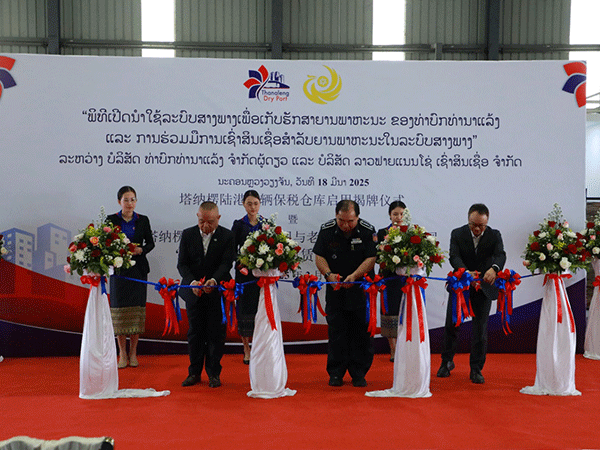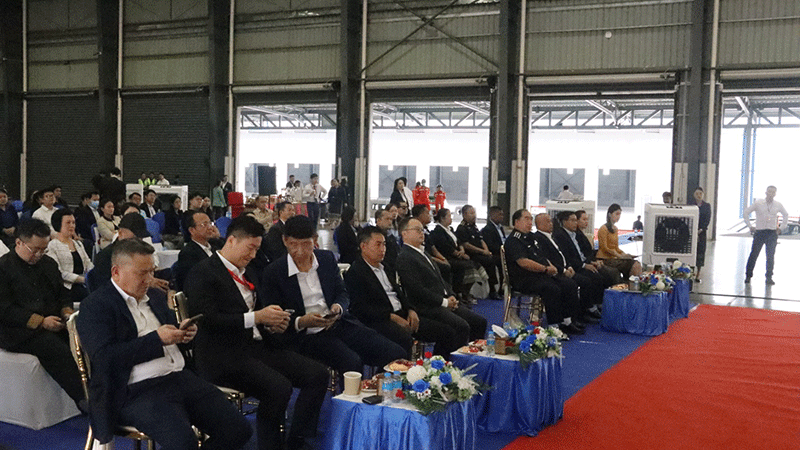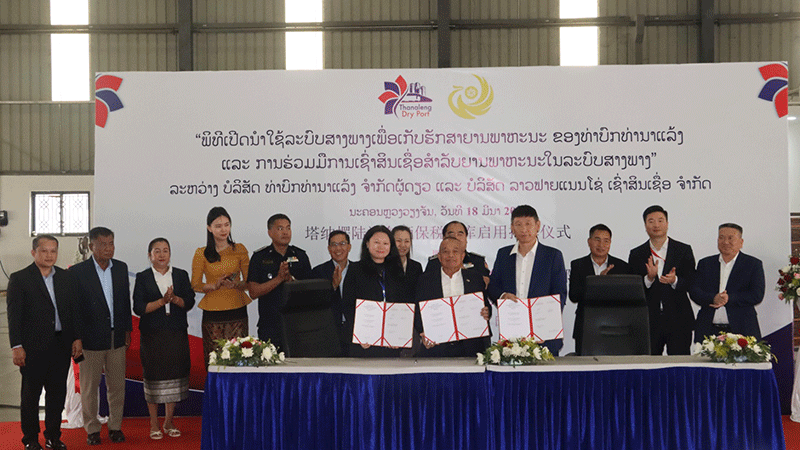Thanaleng Dry Port opens post-sale tax payment warehouse to boost turnover capital
The operator of the Thanaleng Dry Port – Laos’ first integrated logistics centre - in collaboration with Leasing Lao Co., Ltd., has set up a groundbreaking post-sale tax payment warehouse, viewed as a milestone in boosting importers’ turnover capital to grow their businesses.
 |
| The Managing Director of the Thanaleng Dry Port, Sakhone Philangam (left), and other stakeholders cut a ribbon to open a new warehouse at the port. |
The initiative, introduced at the dry port on Tuesday, allows importers to defer import tariff payments until after the sale of their vehicles, rather than paying the tax upfront at the customs checkpoint, as was previously required.
This innovative approach is expected to address businesses’ financial constraints and significantly improve their turnover capital, enabling them to grow their operations more effectively.
Speaking at the launch, the dry port’s Managing Director, Sakhone Philangam, highlighted the warehouse’s role in facilitating trade and improving financial liquidity for importers.
The initiative is an important milestone in further bolstering business competitiveness. It is especially competitive, leveraging the strategic location and customs warehouse of the Thanaleng Dry Port, the single-window customs clearance location for freight transport on the Laos-China railway, which is an important gateway between China and Southeast Asia.
The director described the port and the initiative as a “tool to facilitate trade, aiming to add value to the international trade system through this international port”.
“The main objective is to support international trade. It is viewed as a project that reflects the importance of international economic integration, including the development of logistics and trade in the ASEAN region.” By deferring tax payments, importers can better manage cash flow and reinvest in their operations while awaiting vehicle sales.
Moreover, vehicles stored in the warehouse can be used as collateral to secure financing of up to 70 percent of their actual cost, leasing companies partnering with the initiative have said.
 |
This provides importers with greater flexibility, ensuring they have sufficient funds to sustain and grow their businesses while waiting for vehicle transactions to be completed.
Mr Sakhone explained the details of the system, such as the length of time that goods can be stored at the warehouse, whose indoor facilities can accommodate up to 300 vehicles.
General goods can be stored for 180 days. This timeframe can be extended once, but not for more than 180 days.
A representative from Sitthi Logistics Lao Company outlined the customs procedures for vehicles imported from China through the Boten International Border Crossing to be stored at the Thanaleng International Border Crossing.
Importers and industry stakeholders have welcomed the move, given its potential to streamline import processes and provide much-needed financial relief.
The warehouse is expected to encourage more importers to utilise the Thanaleng Dry Port, further strengthening Laos’ position as a regional logistics and trade hub.
As the pilot project progresses, authorities and stakeholders will assess and draw lessons learnt to explore potential expansions or adjustments to further optimise benefits for businesses and the economy.
The launch of the post-sale tax payment warehouse marks a milestone in trade facilitation, underscoring Laos’ commitment to modernising customs procedures and fostering a more dynamic import-export sector.
 |
 |
By Avertorial Desk
(Latest Update March 21, 2025)
|





